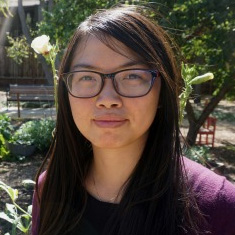
The Archaeology of Old Chinatowns and New Villages
Between the late nineteenth and early twentieth centuries, waves of Chinese migrants immigrated to the United States from rural villages in Southeastern China. These migrants labored in a variety of occupations, but many lived in ethnic enclaves known as ‘Chinatown’ because of discriminatory ordinances. Over the last 50 years, long-buried Chinatowns across the American West have been excavated by archaeologists and analyses of artifact assemblages have provided a glimpse of what daily life was like for a group of people who left few first-hand accounts and were often excluded from local historical narratives. Recent archaeological research, however, has focused on the transnational experiences of Chinese migrants and how migration impacted their home villages.
In this presentation, I discuss my archaeological research on three diasporically connected sites: the San Bernardino and Riverside Chinatowns in Southern California and the hometown of some of these Chinatowns residents. My research indicates that many Chinese migrants who had spent several years in the U.S. moved their families in China to newly built villages, but continued to labor abroad in order to be able to continue sending money back home. As a result, Chinese migrants built enduring communities on both sides of the Pacific and archaeological analyses of material culture reveals the types of objects and ideas that circulated between China and California.
Faculty Member: Laura Ng, assistant professor of anthropology and east Asian studies
Discussion Date: Thursday, April 27 at 2 p.m.
Meet Professor Ng
 Laura W. Ng is a historical archaeologist with a research focus on the archaeology of transpacific migration and Asian diasporic communities. Since 2017, she has been conducting archaeological research on late nineteenth and early twentieth century Chinese migration and the transpacific circulation of people, goods, and ideas between home villages in Taishan County (Hoisan), Guangdong, China and two Chinese diaspora sites in the Southern California: San Bernardino Chinatown and Riverside Chinatown. Other recent projects include co-directing the Cangdong Village Project, which was the first archaeological investigation of a home village in Guangdong Province, and providing research support for the Chinese Railroad Workers of North America Project at Stanford University. She has also helped lead community archaeology projects at Manzanar National Historic Site, a National Park Service unit that preserves the story of the unjust incarceration of Japanese Americans during World War II.
Laura W. Ng is a historical archaeologist with a research focus on the archaeology of transpacific migration and Asian diasporic communities. Since 2017, she has been conducting archaeological research on late nineteenth and early twentieth century Chinese migration and the transpacific circulation of people, goods, and ideas between home villages in Taishan County (Hoisan), Guangdong, China and two Chinese diaspora sites in the Southern California: San Bernardino Chinatown and Riverside Chinatown. Other recent projects include co-directing the Cangdong Village Project, which was the first archaeological investigation of a home village in Guangdong Province, and providing research support for the Chinese Railroad Workers of North America Project at Stanford University. She has also helped lead community archaeology projects at Manzanar National Historic Site, a National Park Service unit that preserves the story of the unjust incarceration of Japanese Americans during World War II.
$0.00
Please enter a whole number
Make an additional donation
$
Please enter a positive number
Virtual Alumni College - The Archaeology of Old Chinatowns and New Villages:
View Lecture & Join Discussion
0
$0.00
View Lecture Only
0
$0.00